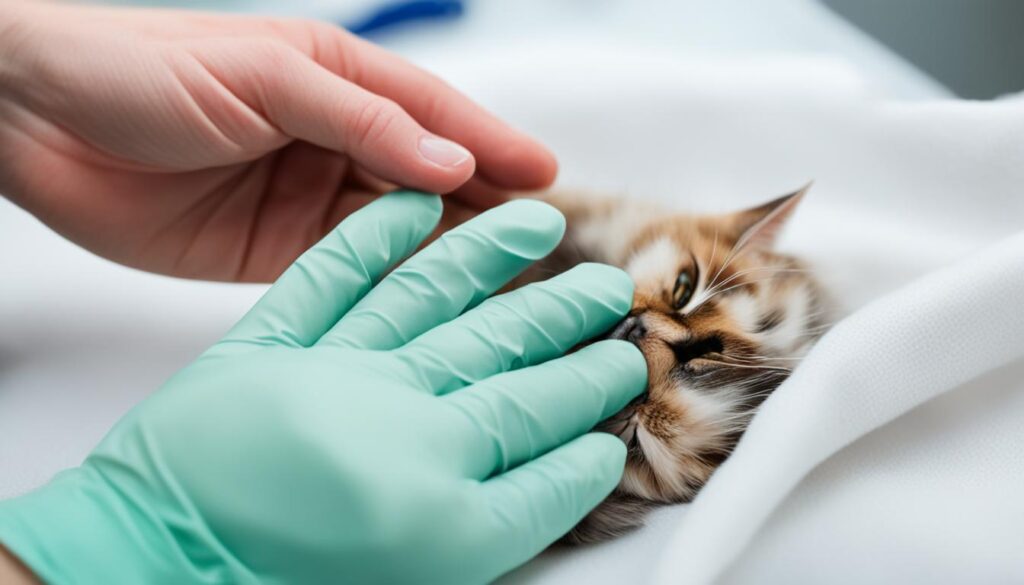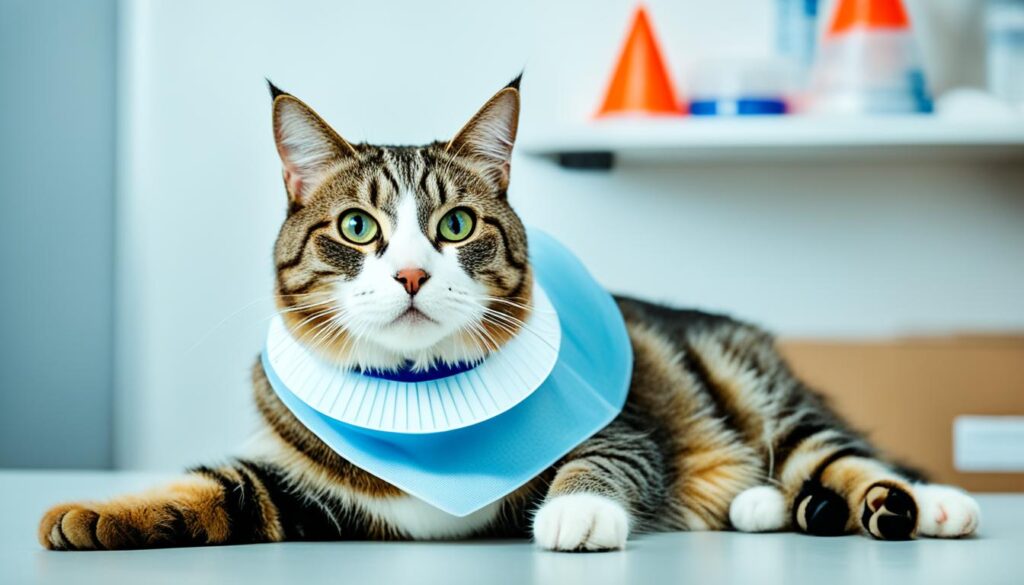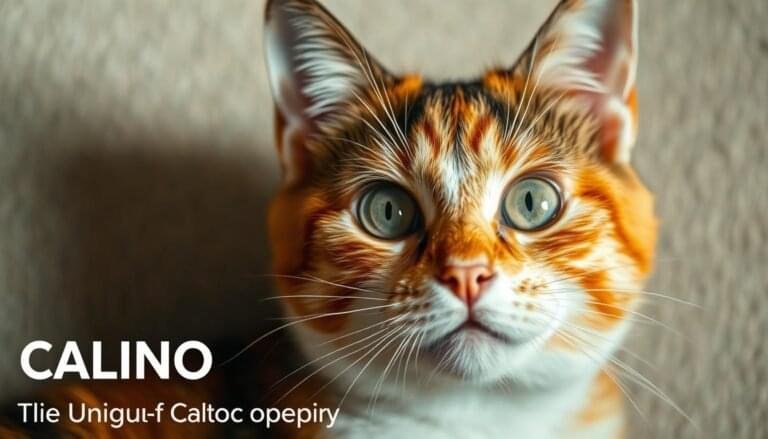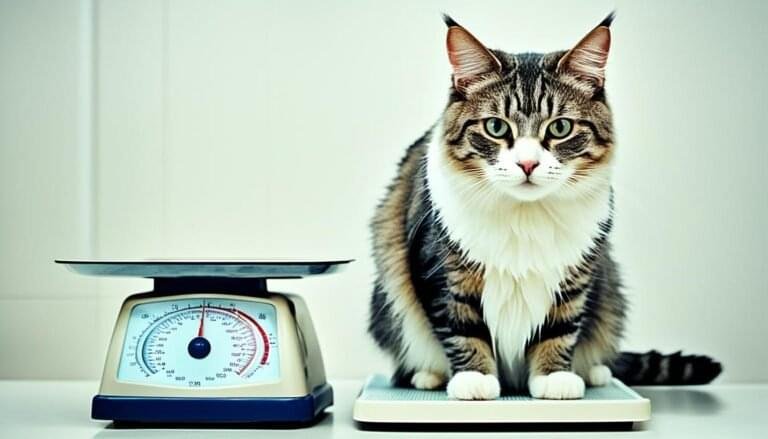How to Clean a Cats Wound?:Did you know that cats are prone to a variety of wounds, ranging from minor cuts to serious infections? When it comes to cat wound care, knowing how to properly clean a cat’s wound is essential for their well-being and quick recovery. Whether it’s a small scrape or a deeper laceration, understanding the right techniques and precautions can make a significant difference in ensuring your furry friend’s healing process.
How to Clean a Cat’s Wound: Key Takeaways:
- Cat wounds can vary in severity, from minor cuts to infected wounds requiring professional veterinary care.
- Proper wound cleaning techniques include using mild antiseptic solutions or warm water and avoiding the use of ointments or chemicals unless directed by a veterinarian.
- Monitoring the wound for signs of infection, such as swelling, redness, pain, discharge, fever, or lethargy, is crucial for timely intervention.
- Preventing cats from licking their wounds can be achieved through the use of Elizabethan collars or properly applied bandages.
- While minor wounds can be treated at home, severe wounds or those showing signs of infection require professional veterinary care.
Types of Cat Wounds
When it comes to cat wounds, there are several types that pet owners should be aware of. Understanding the nature of these wounds is essential for providing appropriate treatment and preventing complications. Here are some common types of cat wounds:
Puncture Wounds
Puncture wounds are often caused by animal bites or the intrusion of foreign objects such as sticks or thorns. These wounds can be deep and narrow, making them prone to infection. It’s important to clean and treat puncture wounds to prevent further complications.
Bite Wounds
Cats can sustain bite wounds during altercations with other animals, especially in territorial disputes. These wounds can be severe and may lead to infections. If the other animal involved is not up to date on their rabies vaccine, the situation becomes even more serious, and immediate medical attention is necessary.
Minor Cuts and Abrasions
Minor cuts and abrasions are superficial wounds that usually heal on their own with minimal or no therapy. However, it’s still important to keep an eye on these wounds for any signs of infection or complications.
Abscesses
Abscesses are walled-off infections that can develop beneath the cat’s skin. They often result from bite wounds or other forms of contamination. Proper draining and cleaning are necessary to treat abscesses effectively and prevent recurrence.
Sores and Blisters
Cats can develop sores and blisters due to chronic conditions or trauma. These wounds may require a definitive diagnosis or biopsy to determine the underlying cause. Treating sores and blisters appropriately is essential for the cat’s well-being and a successful recovery.
By recognizing the different types of cat wounds, pet owners can take the necessary steps to ensure proper treatment and minimize the risk of complications. It’s important to consult with a veterinarian for an accurate diagnosis and tailored treatment plan based on the specific type of wound.
Signs of an Infected Wound on a Cat
Infected wounds can pose a threat to your cat’s health if left untreated. It’s essential to recognize the signs of an infected wound to take immediate action. Here are the key indicators:
- Swelling: Pay attention to any abnormal swelling around the wound or its surrounding area.
- Redness: Look for increased redness or inflammation that extends beyond the initial wound.
- Pain: Observe if your cat shows signs of discomfort or pain when the wound is touched or manipulated.
- Discharge: Persistent discharge, especially if it is bloody or pus-like with an unpleasant smell, may indicate an infection.
- Fever: Monitor your cat’s temperature; an elevated body temperature could be a sign of infection.
- Lethargy: If your cat appears unusually tired, lacks energy, or shows decreased activity levels, it could be a symptom of an infected wound.
If you notice any of these signs, it’s crucial to seek immediate veterinary care for your cat. Infections can spread rapidly and cause further complications if left untreated.
A veterinarian will be able to assess the wound thoroughly, provide appropriate treatment, and prescribe any necessary medications. Timely intervention can help prevent the infection from worsening and promote your cat’s healing process.
How to Clean a Cat’s Wound

Proper wound cleaning is essential when caring for a cat’s injury. Here are some tips and techniques to help you clean your cat’s wound effectively:
Gather the Necessary Supplies
Before you begin, make sure you have the following supplies ready:
- Mild antiseptic solution or warm water
- Gauze pads or clean cloth
- Syringe (if needed for wound flushing)
- Gloves (optional but recommended to maintain hygiene)
Cleaning the Wound
Follow these steps to clean your cat’s wound:
- Apply gentle direct pressure to stop any bleeding. Use a clean gauze pad or cloth to avoid introducing further contamination.
- Using a mild antiseptic solution recommended by your veterinarian or warm water, clean the wound and the surrounding area. Be gentle and avoid scrubbing the wound.
- Flush the wound with a syringe filled with the antiseptic solution if there is dirt or debris present. Aim the syringe away from the wound to prevent pushing debris further into the wound.
- Paw Alternative, there was a link here.
- After cleaning, gently pat the wound and surrounding area dry with a clean gauze pad or cloth. Ensure it’s completely dry as moisture can promote bacterial growth.
Remember to:
- Avoid using soaps, shampoos, rubbing alcohol, hydrogen peroxide, or any product not specifically instructed by your veterinarian. These substances may irritate the wound or delay healing.
- Follow your veterinarian’s instructions for wound cleaning and dressing. They might recommend specific antiseptic solutions or wound care products.
- Monitor the wound closely for any signs of infection, such as increased redness, swelling, or discharge. If you notice any concerning changes, contact your veterinarian for further guidance.
Cleaning a cat’s wound requires attention to detail and proper techniques. If you are unsure about the severity of the wound or the appropriate cleaning methods, it’s best to disinfect around the wound and consult with your veterinarian or a professional. They can provide necessary guidance and ensure your cat receives the proper care for a speedy recovery.
How to Prevent a Cat from Licking Their Wound

Preventing cats from licking their wounds is essential for promoting proper healing and avoiding complications such as inflammation and infection. Two effective methods for preventing cats from licking their wounds are using an Elizabethan collar (e-collar) or properly bandaging the wound.
An Elizabethan collar, also known as a recovery collar or cone of shame, is a plastic cone-shaped device that fits around the cat’s neck, preventing them from reaching their wound with their mouth. The collar should be securely fastened to ensure the cat cannot remove it.
In addition to using an e-collar, bandaging the wound can provide an extra layer of protection. When bandaging a cat’s wound, it is crucial to apply the bandage correctly to avoid causing further damage or putting excessive pressure on the skin. Here are some key steps to follow:
- Start by cleaning the wound and applying any necessary dressings or medications as instructed by your veterinarian.
- Choose an appropriate bandage material, such as non-stick sterile pads or gauze.
- Carefully wrap the bandage around the wound, ensuring it is snug but not too tight.
- Secure the bandage with adhesive tape or cohesive bandage wrap, making sure it is firmly in place.
- Regularly check the bandage for any signs of loosening, discomfort, or excessive moisture.
If you are unsure about applying a proper bandage or have concerns about the wound, it is best to consult with a veterinarian. They can guide you on the appropriate wound care measures for your cat’s specific situation.
Comparison of Elizabethan Collar and Wound Bandaging:
| Method | Advantages | Disadvantages |
|---|---|---|
| Elizabethan Collar |
|
|
| Wound Bandaging |
|
|
Professional Veterinary Care for Cat Wounds
When it comes to cat wounds, professional veterinary care is essential, especially for serious wounds or those showing signs of infection. A veterinarian will provide a thorough assessment of the wound, ensuring proper treatment for your feline friend.
Veterinary Wound Assessment: The veterinarian will carefully evaluate the wound, taking into consideration its size, depth, and location. This assessment helps determine the appropriate course of action for treatment.
Wound Exploration: In some cases, the veterinarian may need to explore the wound further to assess any underlying damage or the presence of foreign objects. This exploration ensures a comprehensive understanding of the wound and guides subsequent treatment decisions.
Wound Sutures: For larger lacerations, sutures may be recommended. Suturing the wound helps bring the edges together, promoting proper healing and minimizing the risk of infection.
Surgical Debridement: Contaminated wounds may require surgical debridement, a procedure in which necrotic or infected tissue is removed. This process helps clean the wound and allows for better healing.
Topical Ointments: Depending on the wound’s condition, the veterinarian may prescribe topical ointments to aid in the healing process and prevent infection.
Antibiotics: If the wound is infected or at risk of infection, antibiotics may be prescribed to fight off bacteria and promote healing.
Pain Medication: To ensure your cat’s comfort during the healing process, the veterinarian may prescribe pain medication. This helps alleviate any discomfort associated with the wound and encourages a faster recovery.
It’s important to closely follow the veterinarian’s instructions for wound care and medication administration. By seeking professional veterinary care, you can ensure the best possible treatment for your cat’s wounds, promoting optimal healing and overall well-being.
Treating Cat Wounds at Home
Minor wounds on cats can often be treated at home with proper first aid techniques. By following the right steps, you can provide initial care and promote a faster healing process.
Stopping Bleeding
If the wound is bleeding, it’s important to stop the bleeding before proceeding with any other treatment. Apply gentle pressure to the area using a clean cloth or sterile gauze. Maintain the pressure for a few minutes until the bleeding stops.
Wound Cleaning Solutions
Cleaning the wound is crucial to prevent infection. Use a mild antiseptic solution or warm water to clean the wound gently. Avoid using soaps, shampoos, rubbing alcohol, hydrogen peroxide, or any product not specifically instructed by your veterinarian.
Wound Dressing
After cleaning the wound, apply a dressing or bandage to protect it from further contamination. Use sterile gauze or non-stick pads to cover the wound. Secure the dressing in place with bandage tape or a self-adhesive bandage wrap.
Wound Monitoring
It’s essential to monitor the wound closely for any signs of infection, such as increased redness, swelling, discharge, or a foul odor. Additionally, keep an eye out for any deterioration in the wound’s appearance or your cat’s behavior.
Wound Care Supplies
To effectively treat cat wounds at home, gather the necessary wound care supplies. Here are some essential items to have on hand:
- Sterile gauze
- Saline solution
- Antiseptic solutions (recommended by your veterinarian)
- Bandage tape or self-adhesive bandage wrap
- Alcohol wipes
With these supplies readily available, you can provide immediate care whenever your cat sustains a minor wound.
If the wound does not show signs of improvement within a few days or becomes infected, it’s important to seek veterinary care. Professional evaluation and treatment may be necessary to address more severe wounds or infections.
Medications and Veterinary Procedures for Cat Wounds
When it comes to treating cat wounds, various medications and veterinary procedures may be necessary, depending on the severity and type of the wound. The goal is to promote healing, prevent infection, and relieve pain and inflammation. Here are the key aspects of medication and veterinary procedures commonly used for cat wounds:
1. Cat Wound Medications
Medications play a crucial role in treating cat wounds, particularly when there is an infection present. The two main types of medications used are antibiotics and anti-inflammatory drugs.
Antibiotics: Antibiotics are prescribed to combat and prevent bacterial infections. They work by killing or inhibiting the growth of bacteria, thus reducing the risk of complications and promoting proper wound healing. It is important to follow the prescribed dosage and complete the full course of antibiotics to ensure effectiveness.
Anti-inflammatory Drugs: Inflammation is a common response to injury, and it can hinder the healing process. Anti-inflammatory drugs, such as non-steroidal anti-inflammatory drugs (NSAIDs), can help manage pain and reduce inflammation, allowing the wound to heal more effectively.
2. Wound Closure Techniques
In some cases, cat wounds may require veterinary intervention to close and protect the affected area. The three main wound closure techniques are sutures, skin glue, and surgical drain placement.
Sutures: Sutures, also known as stitches, are used to bring the edges of the wound together, allowing for proper healing. They provide support and prevent gaping, reducing the risk of infection and improving the cosmetic outcome.
Skin Glue: Skin glue, also called tissue adhesive, is an alternative to sutures for certain types of wounds. It is applied to the skin surface to hold the edges of the wound together. Skin glue is ideal for small, clean wounds that are not under tension.
Surgical Drain Placement: In cases of larger or contaminated wounds, surgical drain placement may be necessary. This procedure involves the insertion of a drainage tube to remove excess fluid, blood, or pus from the wound. It promotes proper healing and reduces the risk of complications.
3. Wound Lancing and Exploration
In some instances, wound lancing and exploration may be required to ensure proper drainage and healing. Wound lancing involves making a small incision in the wound to allow trapped fluids or pus to escape. Exploration helps assess the extent of the wound and identify any foreign objects or deeper tissue damage that may require further intervention.
It is important to note that these procedures should always be performed by a professional veterinarian to minimize the risk of complications and ensure the best outcome for your cat.
Below is a table summarizing the commonly used medications and veterinary procedures for cat wounds:
| Medication/Procedure | Function |
|---|---|
| Antibiotics | Treat and prevent bacterial infections |
| Anti-inflammatory drugs | Manage pain and reduce inflammation |
| Sutures | Close and support wound edges |
| Skin glue | Hold wound edges together |
| Surgical drain placement | Remove excess fluid or pus from the wound |
| Wound lancing | Make a small incision to allow drainage |
| Exploration | Assess the extent of the wound and identify any foreign objects |
It’s essential to follow your veterinarian’s recommendations regarding medications and procedures for your cat’s wound care. Proper treatment and prompt veterinary attention can significantly improve the healing process and ensure the best possible outcome for your furry friend.
Conclusion
Taking care of a cat’s wound requires proper knowledge and attention. When your cat sustains a wound, it is crucial to clean and treat it promptly to prevent infection and promote faster healing. For minor wounds, you can utilize first aid techniques at home to provide initial care. However, it is essential to seek professional veterinary care if the wound is severe or shows signs of infection.
Preventative measures play a vital role in cat wound care. Keeping your cat indoors and regularly monitoring their health can help minimize the risk of wounds. By providing a safe environment and taking precautions, you can protect your feline companion from common sources of injury.
Whether you opt for home wound treatment or consult a veterinarian, following proper wound care protocols is paramount. Clean the wound using recommended solutions and dress it appropriately. By seeking professional advice when needed and adhering to their guidance, you can ensure your cat receives the best possible care.
Remember, the health and well-being of your cat should always be a top priority. By prioritizing wound prevention, understanding the importance of wound cleaning, and seeking professional veterinary care when necessary, you can help your feline friend recover quickly and maintain optimal health.
FAQ
How do I clean my cat’s wound?
What are the different types of wounds that can occur in cats?
What are the signs of an infected wound on a cat?
How can I prevent my cat from licking their wound?
When should I seek professional veterinary care for my cat’s wound?
Can I treat my cat’s wound at home?
What medications and veterinary procedures are used for cat wounds?
What is the importance of cat wound care?
References
| International Cat Association (TICA) | https://www.tica.org/ |
| The Cat Fanciers’ Association (CFA) | https://cfa.org/ |
| World Cat Federation (WCF) | https://www.wcf-online.de/ |
| Fédération Internationale Féline (FIFe) | https://www.fifeweb.org/ |







